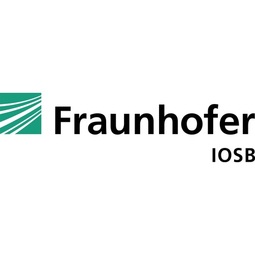
Technology Category
- Automation & Control - Automation & Process Control Systems
The Customer
undisclosed
The Challenge
The Smart Factory Web aims to form a network of smart factories with flexible adaptation of production capabilities and sharing of resources and assets to improve order fulfillment. Key questions are: How can we connect factories to the Smart Factory Web and exchange data reliably? How can we provide the information securely at the right granularity to authorized partners? How can production capabilities be adapted quickly and efficiently in response to orders?
The Solution
*This is an IIC testbed currently in progress.*
MEMBER PARTICIPANTS
Fraunhofer IOSB, Korea Electronics Technology Institute (KETI)
MARKET SEGMENT
Manufacturing: industrial automation
SOLUTION
The Smart Factory Web applies a dual plane 3-tier IIC implementation architecture with IIoT technologies on both planes. The upper plane comprises the Smart Factory Web portal to handle cross-factory interactions through gateways to the individual smart factories. The lower plane is a Smart Factory with a Factory Digital Image for secure, performant communication with the Smart Factory Web.
Secure Plug & Work techniques based on the standards AutomationML and OPC UA are applied to adapt factories on-the-fly by inserting new manufacturing assets into the factory production with a minimum of engineering effort. These standards are applied for information modelling and communication in both planes.
HOW IT WORKS
The usage scenario is order driven adaptive production. This shall be achieved with a sequence of sub-scenarios:
• Publish: registration of Smart Factories of smart factories on the Smart Factory Web with a description of their capabilities
• Find: Discovering Smart Factories with the capabilities needed to process a manufacturing order
• Order: Management and execution of orders in the Smart Factory Web
• Adapt: Adapting the factory production to meet the order requirements
• Bind: Connecting and monitoring assets in the Smart Factory Web
• Collaborate: Provide software plug & work to enable collaborative engineering of manufacturing and automation processes
COMMERCIAL BENEFITS
The testbed will create and validate new business models with flexible assignment of production resources across factory locations. This will create new opportunities for SMEs, allowing them to respond flexibly to manufacturing orders.
The Korean-German collaboration between KETI and Fraunhofer IOSB will advance the international usage of key standards such as AutomationML for the plant description and OPC UA as a communication mechanism as well as architectures for Industrial Internet of Things systems. This will reduce IT system integration and installation costs with faster engineering and ramp-up of components, machines, plants, and IT systems. The mission of Fraunhofer IOSB and KETI is to transfer research results to real applications in industry.
TESTBED INTRODUCTION
The initial smart factories in the Smart Factory Web are two operational factories in Germany: a) the model factory Plug&Work of Fraunhofer IOSB in Karlsruhe and b) selected equipment of the SmartFactoryOWL in Lemgo, an initiative of Fraunhofer and the OWL University of Applied Sciences. The model factories of KETI planned in Korea in Pangyo and Ansan will also be an integral part of the Smart Factory Web. They will be linked to the German model factories to achieve a cross-factory, cross-organization usage scenario.
MEMBER PARTICIPANTS
Fraunhofer IOSB, Korea Electronics Technology Institute (KETI)
MARKET SEGMENT
Manufacturing: industrial automation
SOLUTION
The Smart Factory Web applies a dual plane 3-tier IIC implementation architecture with IIoT technologies on both planes. The upper plane comprises the Smart Factory Web portal to handle cross-factory interactions through gateways to the individual smart factories. The lower plane is a Smart Factory with a Factory Digital Image for secure, performant communication with the Smart Factory Web.
Secure Plug & Work techniques based on the standards AutomationML and OPC UA are applied to adapt factories on-the-fly by inserting new manufacturing assets into the factory production with a minimum of engineering effort. These standards are applied for information modelling and communication in both planes.
HOW IT WORKS
The usage scenario is order driven adaptive production. This shall be achieved with a sequence of sub-scenarios:
• Publish: registration of Smart Factories of smart factories on the Smart Factory Web with a description of their capabilities
• Find: Discovering Smart Factories with the capabilities needed to process a manufacturing order
• Order: Management and execution of orders in the Smart Factory Web
• Adapt: Adapting the factory production to meet the order requirements
• Bind: Connecting and monitoring assets in the Smart Factory Web
• Collaborate: Provide software plug & work to enable collaborative engineering of manufacturing and automation processes
COMMERCIAL BENEFITS
The testbed will create and validate new business models with flexible assignment of production resources across factory locations. This will create new opportunities for SMEs, allowing them to respond flexibly to manufacturing orders.
The Korean-German collaboration between KETI and Fraunhofer IOSB will advance the international usage of key standards such as AutomationML for the plant description and OPC UA as a communication mechanism as well as architectures for Industrial Internet of Things systems. This will reduce IT system integration and installation costs with faster engineering and ramp-up of components, machines, plants, and IT systems. The mission of Fraunhofer IOSB and KETI is to transfer research results to real applications in industry.
TESTBED INTRODUCTION
The initial smart factories in the Smart Factory Web are two operational factories in Germany: a) the model factory Plug&Work of Fraunhofer IOSB in Karlsruhe and b) selected equipment of the SmartFactoryOWL in Lemgo, an initiative of Fraunhofer and the OWL University of Applied Sciences. The model factories of KETI planned in Korea in Pangyo and Ansan will also be an integral part of the Smart Factory Web. They will be linked to the German model factories to achieve a cross-factory, cross-organization usage scenario.

Case Study missing?
Start adding your own!
Register with your work email and create a new case study profile for your business.



